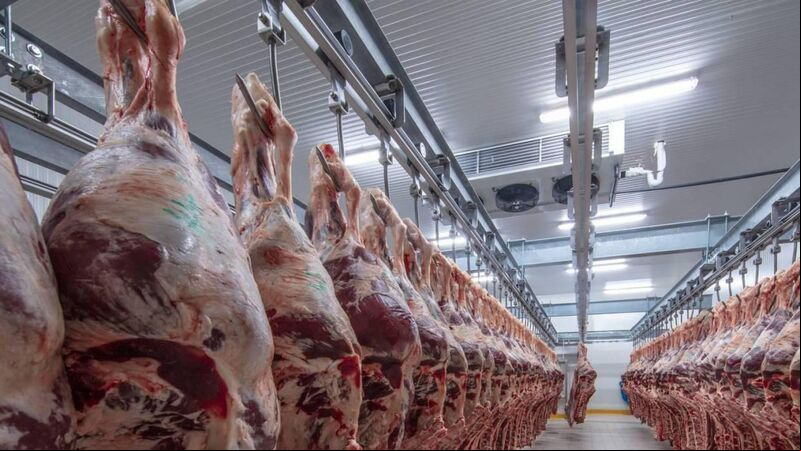We have to change our diets to save planet... we need a plan

Vested interests in the agricultural sector are one of the reasons advocacy to reduce meat in the Irish diet has proved challenging
A survey of the world’s leading climate scientists found 80% of respondents from the Intergovernmental on Climate Change (IPCC) expect global temperatures to rise at least 2.5C above pre-industrial levels this century, with catastrophic consequences for humanity. Just 6% thought the internationally agreed 1.5C would be met.
Many of the scientists expect a ‘semi-dystopian’ future, with famines, conflicts and mass migration, driven by heatwaves, wildfires, floods and storms with an intensity far beyond what is already happening. There are elements of that already playing out before our eyes.
Meanwhile, a report by the Economic and Social Research Institute (ESRI) outlined that, unbelievably, despite all the news reports in the last five years, many people do not understand the link between eating and climate change.
References to food were more likely to be about where it came from and how it was packaged than whether meals contain food linked to high emissions, such as red meat.
A quarter said they had changed what they eat to reduce their carbon footprint and a similar proportion said they would like to but cannot, mostly citing costs and knowledge about what to eat as the biggest difficulties. Almost half (47%) did not see a need to change what they eat.
Vested interests in the agricultural sector are one of the reasons advocacy to reduce meat in the Irish diet has proved extremely challenging.
Last August, the Environmental Protection Agency deleted a tweet about reducing red meat consumption because of objections by the Irish Farmers Association that this was not in line with government dietary guidelines. The tweet urged consumers to ‘try veggie recipes’ and ‘reduce red meat consumption slowly: veggie lunches, meat-free Mondays, etc.’ It also noted 10% of meat is thrown out.
The suggestion raised concerns, in the midst of a climate and biodiversity crisis, as to whether the national dietary guidelines should be reviewed to reflect the environmental and climate impact of food.
Government recommendations on healthy eating and a balanced diet are defined within guidelines. The ‘food pyramid’ shows the different food groups and how much of each is needed for a healthy balanced diet.
Food is organised into five main shelves, with advice on how much to eat from each shelf a day. The advice ranges from the bottom shelf of vegetables, salads and fruit (5-7 servings), starchy foods (3-5 servings), dairy (3 servings), meat and alternatives (2 servings) to the top shelf of fats, spreads and oils (small amounts).
Food and drinks high in fat, sugar and salt are at the top of the pyramid and should be limited to (ahem) once or twice a week.
There is very limited reference to the environmental impact of food. Research on building sustainability into dietary guidelines was conducted by safefood as far back as 2021, examining what is happening in other countries; attitudes and behaviour of consumers; the opinion of a multi-disciplinary team of experts on what a climate-friendly diet should look like; as well as a consideration of potential challenges.
Unfortunately, the key element - specific guidance as to what a climate-friendly diet should look like - did not manage to reach a consensus.
This comprehensive body of work found countries that had explored integration of sustainability into dietary guidelines tend to focus on whole foods rather than nutrients. These countries also emphasise waste reduction and the use of seasonal or locally produced food.
Protective measures to limit conflicts of interest in the development of guidelines was considered essential. This comment was prescient - issued before the controversy around the EPA tweet that caused such a kerfuffle last year.
Key challenges globally include structural barriers, scepticism of the impact of food on climate, and the perceived minor role of individual behaviour in the global context of climate change. The study findings overlapped with the recent ESRI report in finding poor understanding among consumers of which foods carry the heaviest environmental impact and an over-estimation of the impact of ‘food miles’ over the environmental impact of specific foods such as meat, dairy and fish.
Consumers were found to be more interested in the cost, availability and health of food than whether it is organic, locally produced or carries a high environmental impact. As with the ESRI study, almost half of respondents were not interested in eating less animal-based foods, although 20% said they have started to reduce their consumption of red and processed meat some of the time.
This wishy- washy response from consumers to an unfolding climate emergency can be compared to scooping water out of an overflowing bathtub with a teaspoon instead of turning off the tap.
The views of the expert comprising health, environmental, social, political and economic disciplines also provided the kind of diluted response that could be predicted from such a diverse body, each with its own specific set of concerns.
What does all this boil down to in of what we should or should not eat for both health and planet? Unfortunately, specific recommendations around sustainable dietary guidance, specifically around meat, did not emerge.
There were divergent views on reducing reliance on animal-based foods, promotion of plant-based foods, along with the promotion of seasonal, local and organic diets and sustainable food consumption. The group recommended further research prior to the development of sustainable dietary guidelines.
And there lies the crux of the problem. If an expert advisory group cannot agree on sustainable dietary guidance, how can we possibly expect consumers to be anything but confused and ambiguous about the need to radically alter what they eat to combat climate change?
Other countries have managed to reach agreement. Norway published dietary guidance in June, following the Danish lead in adding climate to the menu. The new guidelines advocate a predominantly plant-based approach, emphasising an increased intake of vegetables, fruits, legumes and wholegrains.
“Animal product consumption should be limited to a recommended maximum intake of 350g of meat per week,” according to the guidance.
At a time of spiralling global climate breakdown, it is imperative that governments ensure that dietary guidance specifically frames the impact of food on the environment as well as health.
We cannot chose one over the other - expert consensus on this issue is an urgent priority.







 App?
App?




